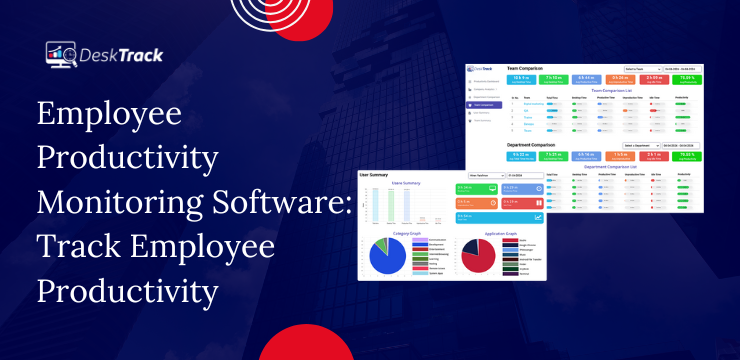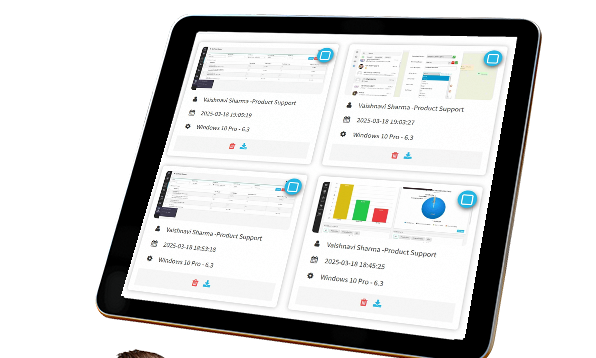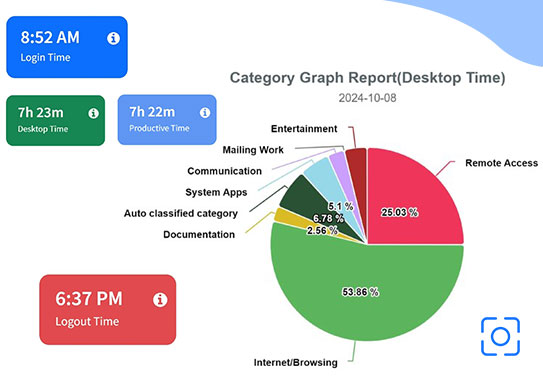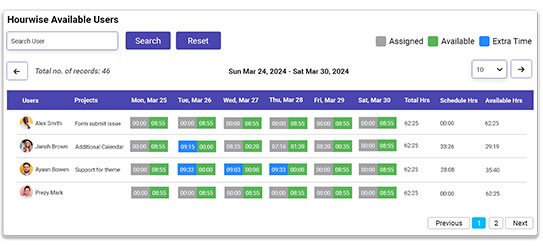Employee Productivity Software: Key Features and Benefits Explained

Strong 8k brings an ultra-HD IPTV experience to your living room and your pocket.
In the modern workplace, especially with the increasing adoption of remote and hybrid work models, ensuring high levels of employee productivity is more important than ever. As companies strive to maintain efficient operations, employee productivity software has become an indispensable tool. This software not only helps businesses track and manage time but also provides actionable insights that can lead to enhanced performance and better overall results.
In this article, we’ll explore the key features and benefits of employee productivity software, explaining how it helps both employers and employees succeed by improving efficiency, managing tasks, and fostering a more engaged workforce.
What is Employee Productivity Software?
Employee productivity software refers to digital tools designed to help organizations monitor, assess, and improve employee performance and time management. It goes beyond simple time tracking, providing businesses with comprehensive features like task management, performance analytics, activity monitoring, and even employee well-being tracking. These tools collect and analyze data to give managers valuable insights into how employees are spending their time, which areas require improvement, and where workflows can be optimized.
Whether it's for small businesses or large enterprises, employee productivity software aims to streamline operations, minimize distractions, and empower employees to be more efficient and focused on delivering results.
Read Also: 15 Best Computer Tracking Software in India for 2025
Key Features of Employee Productivity Software
1. Time Tracking and Reporting
At the core of employee productivity software is the time-tracking feature. This allows managers to monitor how much time employees spend on various tasks, projects, or assignments. With detailed time logs, businesses can assess whether employees are effectively allocating their time or whether adjustments are needed to improve productivity.
Advanced time-tracking software doesn’t just record hours worked but can also track time spent on specific tasks, applications, or websites. With this detailed reporting, managers can identify areas where employees are spending too much time on non-essential activities, providing an opportunity for intervention and improvement.
2. Activity Monitoring
Another essential feature of employee productivity software is activity monitoring. This feature helps businesses track how employees engage with the tools and applications they use during work hours. It can measure the time spent on different websites, software, or even applications, offering insights into employee focus and engagement.
For example, if an employee is frequently using social media or entertainment websites during work hours, the software will flag this behavior, helping managers understand how time is spent. While activity monitoring can sometimes be seen as a form of oversight, its purpose is to ensure employees remain focused and are using their time in a productive manner.
3. Task and Project Management Integration
Employee productivity software often integrates with task and project management tools like Trello, Asana, or Jira. This integration allows businesses to not only track time spent on tasks but also monitor project progress. Employees can manage and update their tasks directly within the software, keeping everyone aligned on project goals and deadlines.
This integration ensures that tasks are prioritized, deadlines are met, and teams can collaborate effectively. By having all relevant information in one place, managers and team members can quickly identify bottlenecks or delays in a project and address them before they affect overall productivity.
4. Performance Analytics and Reporting
An important feature of employee productivity software is its ability to analyze performance data. These tools provide detailed reports on employee productivity, giving managers valuable insights into the overall effectiveness of their team. These analytics can include time spent on specific tasks, number of tasks completed, and the progress toward set goals.
For example, a manager may receive a report showing that an employee has consistently met deadlines but tends to spend excessive time on administrative tasks. This insight allows the manager to provide more targeted feedback or offer tools to automate certain tasks, helping the employee become even more productive.
5. Employee Well-Being Monitoring
While employee productivity software is primarily focused on tracking productivity, many modern solutions also incorporate features that monitor employee well-being. These features may include tracking breaks, screen time, work patterns, and even mental wellness through self-reported surveys.
By monitoring well-being, businesses can ensure that employees are not overworking themselves, reducing the risk of burnout. Encouraging employees to take regular breaks and providing insights into their work habits fosters a healthier work environment, leading to higher levels of engagement and long-term productivity.
6. Goal Setting and Tracking
Employee productivity software can include goal-setting features that help employees track their progress toward specific objectives. This feature helps employees stay focused on their most important tasks and align their efforts with organizational goals. Managers can set clear expectations, and employees can use the software to measure their performance against these objectives.
Read Also: Top 10 Demands of Time Tracking Software in 2025
Tracking progress toward goals provides both employees and managers with a sense of direction and accomplishment, boosting morale and motivation. It also creates a transparent way of measuring success, ensuring that everyone is working toward the same targets.
Benefits of Employee Productivity Software
The adoption of employee productivity software offers numerous benefits for both businesses and employees. These tools not only help optimize workflows but also create a more engaging and supportive work environment. Here are some of the key advantages of using this software:
1. Improved Time Management
Effective time management is essential for increasing productivity. By using employee productivity software to track time, businesses can identify how employees are spending their hours and make necessary adjustments to ensure that time is allocated efficiently. This improved time management enables employees to focus on high-priority tasks and meet deadlines more consistently.
2. Increased Accountability and Transparency
When employees know that their activities and time are being tracked, they are more likely to stay on task and remain focused. Employee productivity software increases accountability by providing both managers and employees with a clear overview of time spent and tasks completed. This transparency fosters a sense of responsibility among employees, encouraging them to perform at their best.
Additionally, this transparency can lead to a more open and constructive feedback loop. Managers can quickly provide real-time feedback on performance, celebrate achievements, and address issues as they arise, rather than waiting for end-of-week or end-of-month reviews.
3. Enhanced Employee Engagement and Motivation
One of the major challenges businesses face is keeping employees engaged and motivated. Employee productivity software can help by providing employees with clear goals, task lists, and progress tracking. Having these tools in place gives employees a sense of purpose and control over their work, increasing motivation.
Moreover, by providing insights into employee well-being, businesses can ensure that their teams are not overworked, leading to improved job satisfaction and long-term engagement.
4. Better Workflow Management
By integrating task and project management features, employee productivity software helps businesses better manage workflows. Managers can ensure that tasks are prioritized, resources are allocated appropriately, and deadlines are met. Additionally, real-time progress tracking allows teams to quickly adapt to changes and avoid delays.
Improved workflow management also reduces the risk of bottlenecks and inefficiencies, which ultimately leads to higher output and faster project delivery.
Read More: Top 10 Employee Monitoring Software for Call Centers
5. Actionable Insights for Improvement
The performance analytics and reporting features of employee productivity software offer managers valuable insights into areas where employees may be struggling or excelling. By regularly reviewing these reports, businesses can identify trends and implement strategies for continuous improvement.
For example, if the data shows that an employee is consistently falling behind on certain tasks, a manager can investigate further, offer support, or provide additional training to help the employee improve. These actionable insights allow businesses to make data-driven decisions that lead to better performance.
6. Reduced Risk of Burnout
By monitoring employee work patterns and well-being, employee productivity software helps reduce the risk of burnout. Features such as break reminders and workload tracking ensure that employees maintain a healthy work-life balance, leading to improved productivity and long-term success.
Conclusion
Employee productivity software is a powerful tool that can significantly enhance the efficiency and effectiveness of a workforce. By providing businesses with time tracking, activity monitoring, performance analytics, and goal-setting capabilities, this software enables organizations to optimize workflows, improve time management tools, and foster a more engaged and motivated workforce. With the right tools in place, businesses can create an environment where employees feel empowered, productive, and focused on achieving their best results. Ultimately, investing in employee productivity software can lead to both individual and organizational success.
Note: IndiBlogHub features both user-submitted and editorial content. We do not verify third-party contributions. Read our Disclaimer and Privacy Policyfor details.







